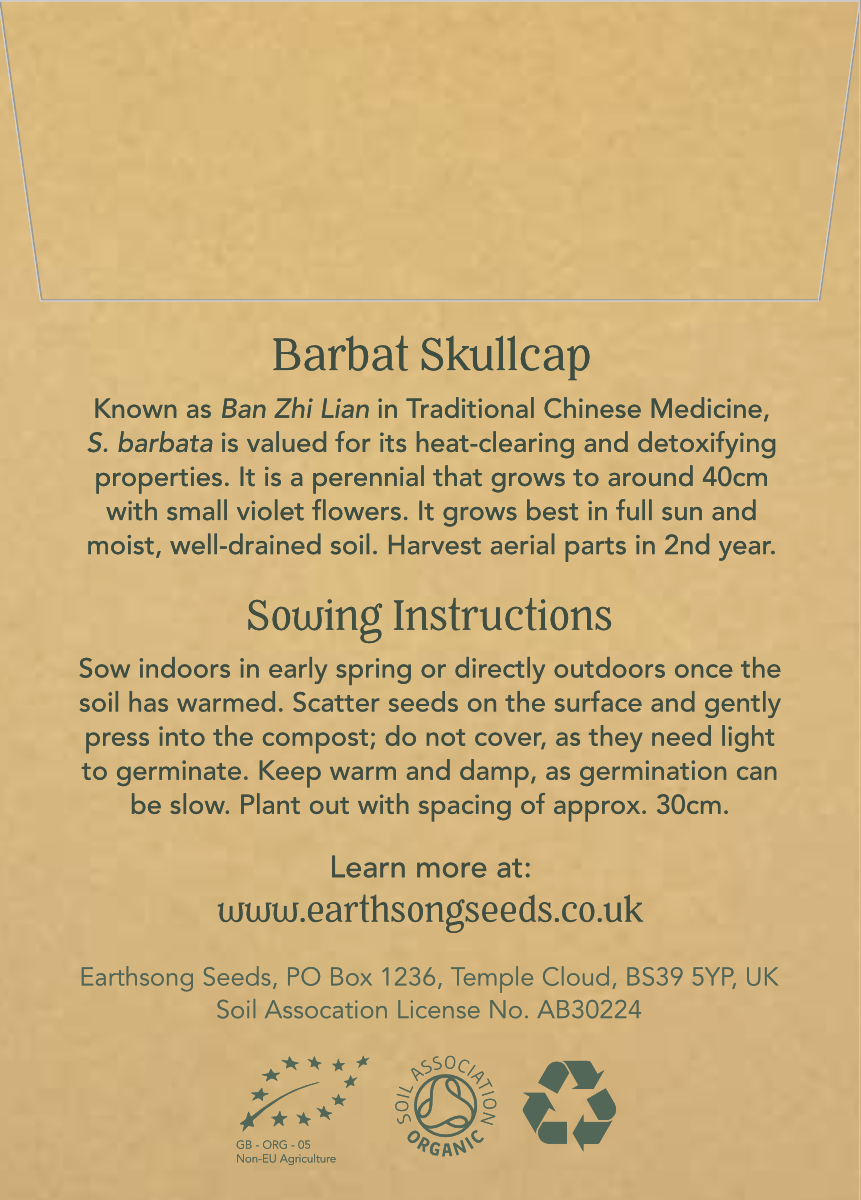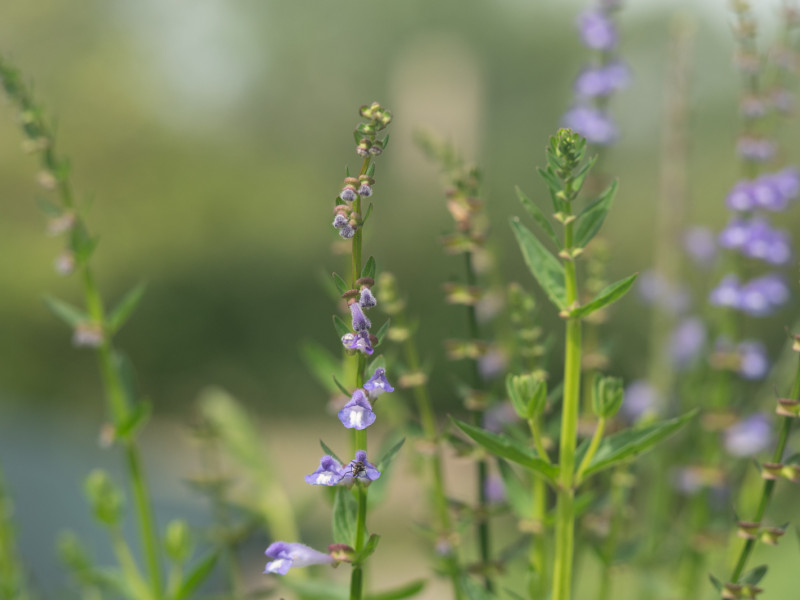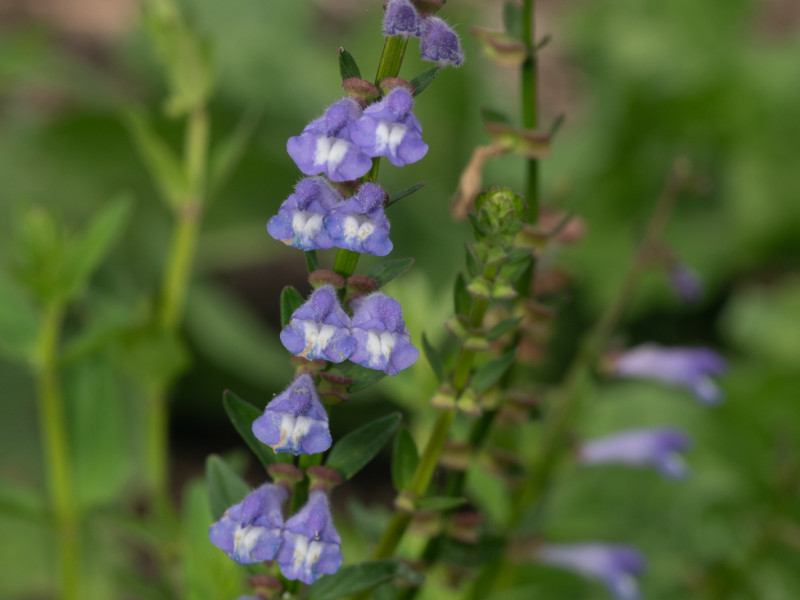Description
Barbat skullcap is a delicate perennial native to southern China, Korea and Southeast Asia, long recognised in traditional medicine for its cooling qualities and its use in patterns linked with heat and stagnation.
Also known as Ban Zhi Lian, it is an important “heat-clearing and toxin-resolving” herb in Traditional Chinese Medicine. Unlike the American skullcap (Scutellaria lateriflora), which is best known as a calming nervine, S. barbata is used where there is heat, toxicity, fever or inflammatory swelling. Read more about how the three main skullcap species compare in the section below.
Native to relatively warm, moist meadows and riverbanks, barbat skullcap thrives in sunny or lightly shaded positions with steady moisture and good drainage. It forms low, graceful mounds of slender stems topped with small violet-blue flowers through summer. The aerial parts are harvested in the plant’s second or third year when the plant is in full growth and bloom.















